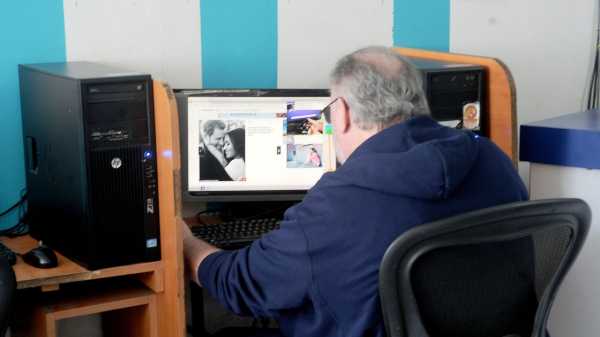
What is the platonic ideal of a successful paparazzi shot? Ron Galella, recognized as one of the pioneers of the genre in America, defined his style of photography as one that pursued authenticity and spontaneity. “Other photographers would do posed and well-lit pictures,” he told Vanity Fair, in 2015. “I captured celebrities in their environments: at parties, in airports, when they were not aware of the photographer or the camera. This was the real them.” I thought of Galella’s words last week, as I looked at pictures of Thomas Markle, who, while not a celebrity himself, is closely associated with one; he is the father of Meghan Markle, the American actress set to marry Prince Harry this Saturday. A retired Hollywood lighting director who now lives a few miles south of the American border, in Rosarito, Mexico, he and Meghan, according to People, have had their “ups and downs” but are now in “a good place.” In the images, which were shot in March, the elder Markle is seen engaged in a number of everyday activities, all linked to the impending royal nuptials. In one set of pictures, he is being measured, apparently for the wedding suit that he would wear to walk his daughter down the aisle; in another image, he is at the front window of a local Starbucks, studiously thumbing through a book about British landmarks; in another, he is sitting at an Internet café, looking at online coverage of Meghan and Harry, seemingly unaware of the photographer’s lens.
It was this last image that I found the most striking. Wearing an oversized blue hoodie, Markle is tucked within the close, dun-colored confines of a public workstation, his wide back turned to the camera. On the screen in front of him, the gorgeous, chiselled profiles of his daughter and the prince pop in black and white, against the turquoise, blue, and white palette of the Mexican Internet café. Looking at the image, it is easy to imagine the father’s pride, tinged with his regret at losing his daughter—the photograph emphasizing the suddenly unbridgeable divergence between his world and hers. The picture’s poignancy is informed by what we think we know of fathers and daughters, and of the affection and necessary separation that often defines the relationship between them.

Further Reading
More from The New Yorker on the royal wedding.
Early this week, the Mail on Sunday revealed that these paparazzi pictures were, in fact, staged; Markle had collaborated with a photographer to pose for the images, which are said to have been sold for up to one hundred thousand pounds. (It is unclear how much money, if any, Markle himself made from the transaction.) Following the exposure of the ruse, Markle announced that he wouldn’t be attending the royal wedding to walk his daughter down the aisle, in order not to cause her any more embarrassment. (Reportedly, he also suffered a heart attack last week, but he checked himself out of the hospital so that he could attend the ceremony; on Wednesday, he checked himself back in to undergo surgery.) Markle also expressed regret about posing for the images, explaining that they were part of an ill-fated attempt to recast himself in a more positive light; he had been previously photographed, in Rosarito, looking dishevelled as he purchased cigarettes and beer. (Meghan’s estranged half-sister, Samantha Markle, has said that it was she who had advised Thomas to come up with a more forthcoming, media-friendly image.)
In retrospect, the idea of going to a Starbucks to leaf through a book about British country houses, or of using a public computer to look at the most widely disseminated picture of your own daughter and her beau, stretches credulity. And yet the performative nature of the images, which stand in opposition to Galella’s definition of the ideal paparazzi photo—they’re not of famous people unstaged, but of an unfamous person staged—makes them doubly touching. We can only guess at the deep shame felt by the daughter when confronted with her father’s scheme. (If “The Crown” has taught us anything, it is that the House of Windsor takes extreme care in managing every private move with a view to its public perception.) We imagine the royal couple’s hushed discussions; the daughter’s relief, tinged with sadness, at the father’s announcement of his decision not to go to Windsor. These matters of family, heartbreak, and etiquette, played out over the Atlantic divide, could have filled a late-Victorian novel.
Perhaps more than anything, the images inspire in us a simple sympathy. In its positioning of Markle as a celebrity-news scroller, the Internet café photo gives us a figure to associate ourselves with. Whether I like it or not, I am much more Thomas Markle in a hoodie in a Mexican Internet café than I am Meghan Markle and Prince Harry posing for engagement photos in Frogmore House. Looking at the picture, I can almost feel the chafing of the office chair on my thighs, the grain of the cheap plywood desk under my forearms, the distance between myself and the image on the screen widening with every passing moment.
Sourse: newyorker.com






